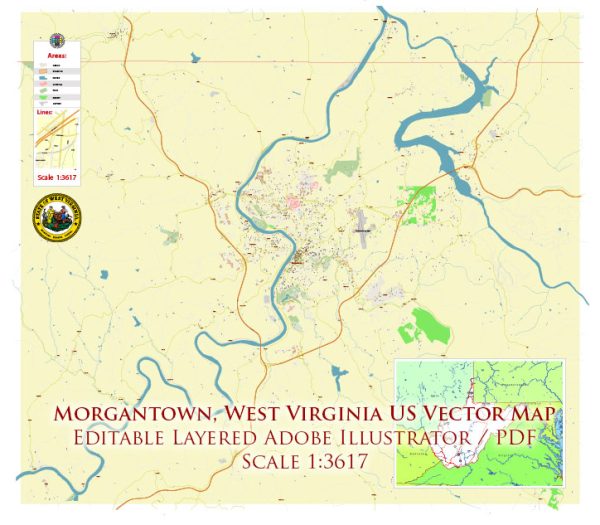Morgantown, West Virginia, has a rich history of urban development that reflects the broader trends and challenges faced by many American cities. The city’s growth and transformation over the years can be traced through various key periods and factors:
- Early Settlement and Development (18th Century): Morgantown was first settled in the late 18th century and named after Zackquill Morgan, one of the area’s earliest European-American settlers. The town’s development was initially influenced by agriculture and the expansion of the railroad, which played a crucial role in connecting Morgantown to other parts of the region.
- Industrialization and the Railroad Era (19th Century): Like many other cities during the 19th century, Morgantown experienced significant industrialization. The expansion of the railroad facilitated the transportation of goods and people, fostering economic growth. The arrival of industry contributed to population growth and the emergence of a more diverse urban landscape.
- University Town and Education Hub: The establishment of West Virginia University (WVU) in 1867 had a profound impact on Morgantown’s development. The university became a major economic and cultural driver for the city, attracting students, faculty, and staff. The presence of a university has continued to shape Morgantown’s identity as an education hub and has influenced the city’s socioeconomic dynamics.
- Urban Planning and Infrastructure (20th Century): The 20th century saw increased efforts in urban planning and infrastructure development in Morgantown. The city expanded its transportation networks, including roads and bridges, to accommodate the growing population. Suburbanization trends also became evident during this period, with the development of residential areas beyond the city center.
- Economic Shifts and Challenges: Morgantown, like many industrial cities, faced economic challenges as industries evolved or declined. The city experienced shifts in its economic base, with a transition from traditional industries to a more diversified economy that included education, healthcare, and technology.
- Modern Development and Revitalization: In recent decades, Morgantown has undergone efforts to revitalize its urban core. Redevelopment projects, including the Waterfront Place Hotel and the High Street Corridor project, aimed to enhance the city’s appeal, attract businesses, and create a more vibrant downtown area.
- Transportation and Accessibility: With its location along the Monongahela River and the development of modern transportation infrastructure, including Interstate 68, Morgantown became more accessible to regional and national markets. The expansion of the Morgantown Personal Rapid Transit (PRT) system has also played a role in shaping the city’s transportation landscape.
Overall, Morgantown’s history of urban development reflects the broader trends of American cities, from early settlement and industrialization to the challenges and opportunities of the 21st century. The city’s identity as a university town, coupled with efforts in urban planning and revitalization, continues to shape its trajectory in the modern era.


 Author: Kirill Shrayber, Ph.D.
Author: Kirill Shrayber, Ph.D.